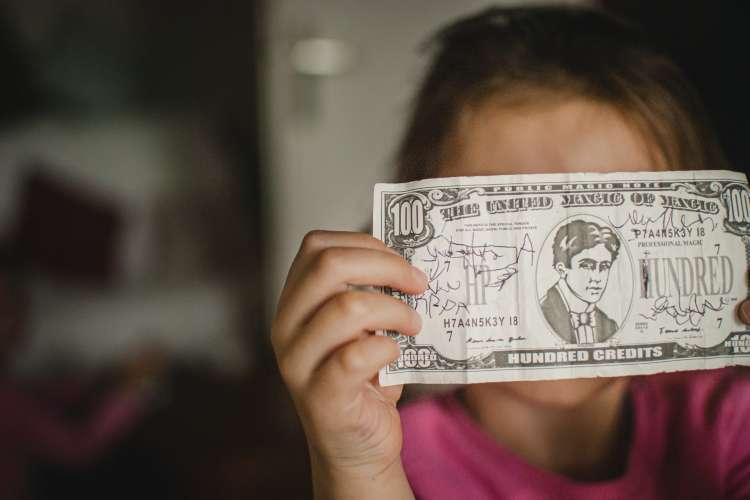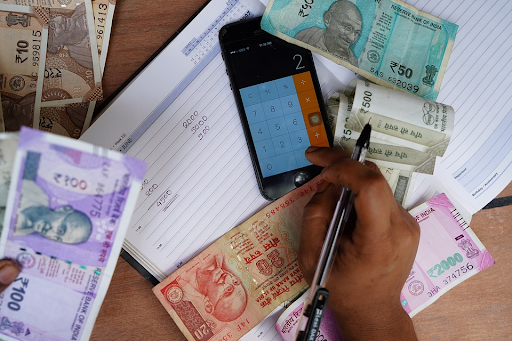Counting Money for Kids: Tips on Teaching Kids Counting Money the Right Way


Money is the basic need for human survival. As adults, we have learnt to count, exchange, and buy things using money. Now, the difficult task as a parent or a teacher is to teach the kids about money counting. The kids are smart enough. They are attracted to money as they know that money is an important medium that helps buy things. They do recognise money as a medium for payment and exchange to get something in return.
But, the thing that can be difficult for kids would be to count money. They know about exchanging money, but do they know how much money it is? There are different types of currencies like notes and coins available in different shapes, sizes, and colours.
Therefore, they should know how to recognise them and how to count them. Before counting money, the kids should have an understanding of basic mathematics. Counting money for kids can be confusing, so here we list some tips to help teach counting money for kids.
What is Money Counting?
Kids can find it troubling to count money. As adults, you find it easy, but do you remember the first time you got confused about how much change you have to return while buying something as a kid? That is what confuses the kids, as exchanging money involves adding and subtracting, which could be difficult for your kid.
Suppose a kid bought a pencil of three rupees and gave a ten rupees note to the shopkeeper, so the kid should know beforehand how much he should get in return. When a kid has saved two 10 rupees notes and three 20 rupees notes, they should know how much the total is. This is all basic money counting which you can easily teach your kids.


Also Read: – Also Read: Math Game For Kids: Develop Maths Skills with a Mix of Fun and Entertainment
Teach Skip Counting before Counting Money
Skip counting is an easy method to help your kid begin with counting money. Imbibe them with the habit of skipping counting by 5s, 10s, and 25s. Make it a regular habit for them to skip count numbers. Make them practice skip counting until they start perfectly skip counting to 100s with 5s and 10s.
You can help them skip counting through various easy tasks like writing numbers on a board from 0 to 100 and tell them to circle the numbers every 5 counts. Later, you can ask them to write the numerals of 5s until 100.
Another task could be placing numbers written on paper on the staircase. Then you can ask your children to take 5 steps each and stand on the number after every 5 counts. You can execute this activity at any safe place in or around the house.
Ensure that in every skip counting task, the toddlers should say the numbers aloud. This will help them remember the denomination. You can change the skip counting from 5s to 2s, 3s, 4s, or any single-digit number which your kid can grasp.
Introduce the Currency
The Indian currency has gone through various changes recently, so you should begin by introducing one coin at a time to your kid. The one rupee from the late 90s and early 2000s are still being used, and the same one rupee coin has gone through multiple design changes. So introduce them with one denomination of coin, which is used the most. Then introduce them to different designs of the coin. Similarly, you can make them learn about other coins too.
You can also introduce the currency notes to the kid one by one. The currency notes after demonetisation are quite colourful, which will help your kid recognise the new notes. For example, chocolate brown for 10 rupee note, green-yellow for 20 rupee note, fluorescent blue for 50 rupee note and likewise.
Introduce the Value of Money
After the basic introduction to the currency, you can go a bit in-depth to teach more. The kids should be able to recognise both the coins and the currency notes from front and back. They should know that the value of a 10 rupees coin is equivalent to the value of their notes. Kids must be able to distinguish the 2 rupees coin from 1 rupee.
As of now, the 25 and 50 paise coins are not in use. But still, you should teach them what ‘Paise’ is, and how much paise equals one rupee. If you have access to the information dating back to British rule, then introduce them to what ‘annas’ are. It will help them know how a rupee is made from paisa and the value of paisa in recent times.
Sort the Money
Once you have introduced them to all the currency coins and notes, you have to make it easier and more understandable. Ask your kid to sort out the specific denomination of money and start making their groups. The kids will be able to identify the currency based on the value, size and shape. Once they get good with sorting out coins, then they will be able to identify the money.
Mixed Money Counting
Once the children have become an expert in identifying different types of currency notes and coins and can value them correctly, introduce mixed money counting to them. Make your kid count the money with mixed currencies from small coins to big notes. You can start with coins of 1, 2, 5 and 10 rupees. Later, you can add currency notes of 20, 50, 100, and 500 rupees. Give them any random notes and coins to calculate.
You should also start asking them to give you a total figure of the money they have. It will help them learn how to spend. Ask any amount randomly, whether big or small, and check how they calculate and give you the money. They will slowly get better at it.
Practice is the Key
Once the children have become an expert in counting money, you have to keep revising what you taught them. Practising with some fun money games will help them get better at counting money. You can also sometimes play with them being a bank, where you can ask them to deposit money, or sometimes make them the cashier. With these games, they won’t even realise that they are learning the maths of counting money. With the practice on how to learn money counting, they will also be able to get good at mathematics.
With this, they will know how handling change works, and they will also learn how to save and spend.
Conclusion
Teaching your kid money counting is a tough task but not an impossible one. You’ll have to be patient with your kid, as they will pick up things slowly, and most of the time, they might not be in the mood of learning. Kids love being playful, so ensure you are teaching them to count money in playful ways. Your bright kid might also need some maths help, and what’s better than getting that help at your home.
Check out The Real School Of Montessori. We have expert mentors to guide your children on the right path of learning through personalised mentorship. There are also various fun and rewarding games. If you wish to test out the waters, book your favourite masterclass and clear your doubts.
Also Read: – Abacus for Kids: Let’s Design our Children’s Life Together
Recent Posts
What are the Advantages of Online Teaching at The Real School?
In the article -"What are the Advantages of Online Teaching at The Real School?" we…
What is the Full Form of School?: Unveiling the Acronym
The term "school" carries profound significance in the realm of education, representing more than just…
What is Math Full Form?: Cracking the Code
Mathematics, often referred to as "Math," is a subject that elicits various reactions from students…
What is Full Form of Homework?: Decoding Academics
Homework, an integral part of the academic journey, often raises questions about its purpose and…
What is Full Form of Teacher?: Demystifying Education
In the intricate tapestry of education, teachers stand as the pillars shaping the intellectual and…
What is Real Education?: Discovering Its Essence and Impact
The concept of real education is evolving, transcending traditional views that equate it solely with…


